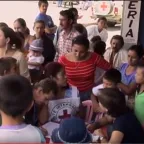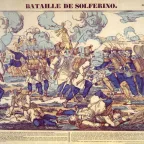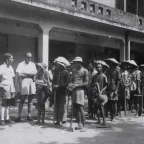Working for the ICRC: Communication delegate
A complete introduction to how the ICRC communicates, in an age when clear, precise and convincing communication has never been more …
A complete introduction to how the ICRC communicates, in an age when clear, precise and convincing communication has never been more …

The carnage of 1914-18 should have made this conflict the last. The public was horrified at the amount of blood that been spilt and war now seemed to have no place. But events themselves would …

The Red Cross came into being at the initiative of a man named Henry Dunant, who helped wounded soldiers at the battle of Solferino in 1859 and then lobbied political leaders to take more action to …

At the end of the Second World War, the ICRC finds itself in an ambivalent position. Its humanitarian work during the conflict – in particular in aid of prisoners of war – has been widely commended. …

This document contains a summary of the most important issues of constitutionality raised by different national judicial and quasi-judicial bodies with regard to the ratification of the Statute for …
Hernán Reyes has been an ICRC doctor for 26 years. During this time, he has visited hundreds of prisons across five different continents. In 1984, during the period of military rule in Uruguay, he …
The Movement has long been active in addressing the needs of individuals and communities affected by internal displacement. The Movement Policy on Internal Displacement, adopted by the Council of …
In 2007, the 16th General Assembly of the International Federation of Red Cross and Red Crescent Societies requested the Governing Board to establish a Reference Group on Migration to provide …
This is the book that prompted the creation of what is now a worldwide movement with millions of members and made the name of Henry Dunant known everywhere. The account has moved many people and …
As the guardian of international humanitarian law (IHL), the ICRC supports efforts to end impunity for international crimes and is keenly interested in the establishment and jurisprudence of …
Try one of the following resources:
Created in 1863, the ICRC library, alongside the ICRC archives, provides an indispensable documentary reference on the organization itself and international humanitarian law.
International humanitarian law is based on a number of treaties, in particular the Geneva Conventions of 1949 and their Additional Protocols, and a series of other instruments.
Customary international humanitarian law consists of rules that come from "a general practice accepted as law" and that exist independent of treaty law.